Goats – A Homesteader’s Best Friend See more on: Total Survival

In a situation where you are looking to prep for maximum self-sufficiency, you are probably considering adding livestock to your plans. Properly managed and raised, livestock can provide generations’ worth of value to your homestead. Raising goats, chickens and other livestock is an essential part of homesteading.
To get the very best ‘bang for your buck’ (no pun intended!), an animal which can provide meat and milk, and which has a relatively short gestational period, with multiple births common, is the ideal. An animal which can give both meat and milk provides all you need in the way of protein for essential survival. This is a good explanation of why your body needs protein:
“Protein is in every living cell in the body. Our bodies need protein from the foods we eat to build and maintain bones, muscles and skin. We get proteins in our diet from meat, dairy products, nuts and certain grains and beans. Proteins from meat and other animal products are complete proteins. This means they supply all of the amino acids the body can’t make on its own. Plant proteins are incomplete. You must combine them to get all of the amino acids your body needs.
It is important to get enough dietary protein. You need to eat protein every day, because your body doesn’t store it the way it stores fats or carbohydrates. The average person needs 50 to 65 grams of protein each day. This is the amount in four ounces of meat plus a cup of cottage cheese.” (via Medicine Plus)



Raising goats for preparedness
In my opinion, goats are the perfect stock for homesteading and prepping. They take the advantage over other options primarily due to their ability to subsist on very basic pasture and browse, unlike cows, who require significantly more grain, grass and additional forage in order to maintain optimum weight and output. While a cows will provide a greater volume of meat and milk, I believe the other disadvantages outweigh this. Cows can, and will, challenge fences for entertainment value, require a greater area for living space and shelter, and are far harder to handle for routine care.
Goats, however, are relatively easy keepers, and will be as happy and productive kept in a mostly wooded area as they will on acres of pasture. In fact, with access to woodland and browse, they will essentially ‘self-medicate’, finding plants and fauna to settle an upset rumen, or treat a parasite issue. They will, of course, require human intervention with medications if their issues become out of hand, but given the opportunity, they will often forage a solution alone.


Under correct conditions, with adequate pasture rotation, goats require little in the way of prepping for their keep, and can be maintained fairly easily without the addition of feeds or grains. Indeed, goats are happier with access to browse – leaves, branches, other ground growing plants – than they are when presented with acres of lush grass. The barks, leaves and rough stems of the plants found growing in wooded areas take longer to digest in the rumen and therefore help them to stay warm in cold weather and stay full longer. They are straightforward in their requirements for housing; a simple three sided barn with a soft floor, which provides shelter from the wind and rain, will keep them happy. However, goats do hate to be wet and production will drop significantly if they expend their energy, shivering and trying to keeping warm.

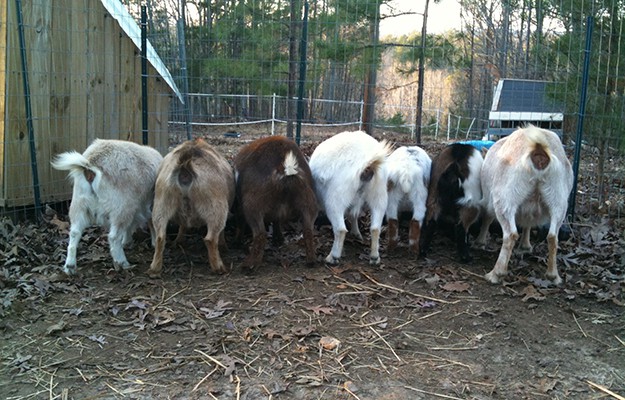
Raising Goats – Breeds:
While there are breeds that are generally intended for either milk (Nigerians) or meat (Boers / Pygmys), there are those which will provide a good deal of both. Saanens and Nubians are good and popular examples of such breeds; does are heavy milk producers, providing a family with up to two gallons of milk a day, which can also be made into cheese and other dairy products, and extra bucks can be wethered (castrated, an easy at-home, two minute process) and raised for meat. The wethering process helps to keep the meat tender and reduce the ‘bucky’ taste it can otherwise have if the males are left intact. Also, bucks tend to run to more muscle than meat, making the result tougher and needing a longer cooking time.

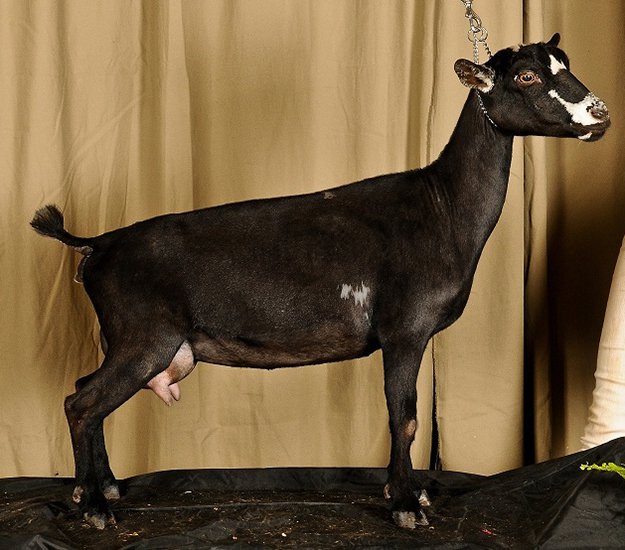
There is a third option, but you will likely lose out in the milk department: Angoras. This adorable breed, which is of medium size (bucks are around 125-175lbs, does generally 80-100), is both a reasonably sized meat animal and an excellent fiber producer. The fiber can either be felted or spun to provide the means to make clothing and even footwear. They can be somewhat more high maintenance than dairy breeds, with greater tendencies towards parasites, particularly external ones, and if you give them access to brush and woodland while they are in coat, you’ll be picking VM (vegetable matter) out of the fiber for days.
That or you’ll lose the entire fleece because you have to ‘field shear’ it from the goat who is irretrievably stuck in thorn bushes, deep in the woods. Ask me how I know this. However, in conditions designed to preserve their fiber, the Angora goat is spectacularly efficient at producing volumes of fiber which can then be washed, carded and spun for use in a variety of clothing and household items.

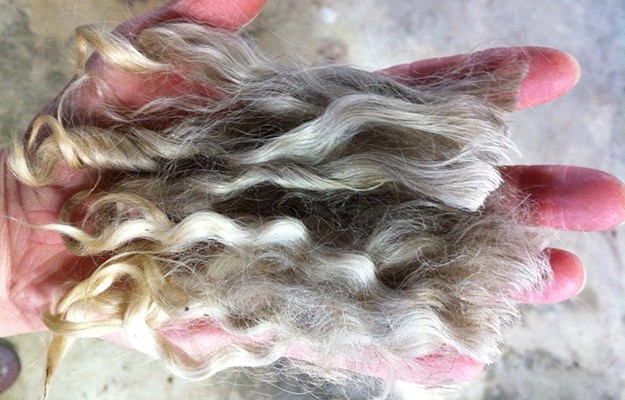
Gestation for goats is between 145-151 days, and the large breeds tend to be mono- estrus, meaning that they cycle, or come into season, during a fixed period, usually late summer through early-mid winter. Good quality stock will milk right through the next breeding, only drying up briefly during the last 30-45 days of pregnancy. With proper planning, and a large enough herd, milk can be ‘on tap’ all year. Does with good bloodlines and proven hardiness should be chosen, and preferably two bucks from unrelated lines. Having just one buck puts all your eggs in one basket, and I am a huge proponent of never having just one breeding male, be it chickens, goats or cattle.
 report this ad
report this ad
Twice now I have found myself losing a male to sickness or a predator, and been left trying to source a good quality breeding male in short order. It almost always happens when season is about to start, when prices are highest. In a non-survival situation this is irritating and expensive, and if you were in a time where travel and internet connection was not possible, it would be even worse. So plan ahead for those annoying occurrences. Also, while line-breeding isn’t the end of the world, and can even be beneficial in some circumstances, you will eventually see a decline in the quality of your milkers if you ‘wind it too tight’ for too long.

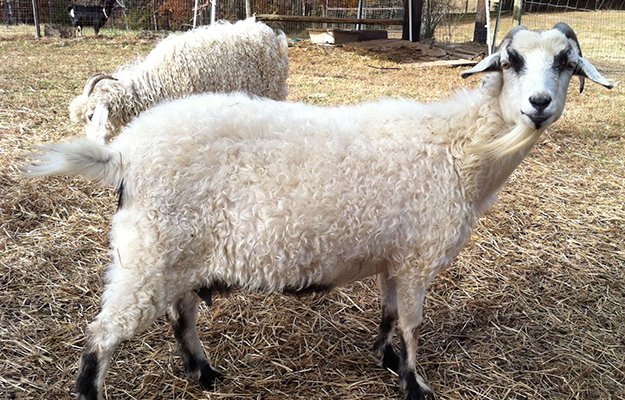
Therefore, having a couple of diversely bred bucks is helpful in the long term. Bear in mind that while registered stock is usually preferable, in a prepping situation, papers are worthless. Rather, for these means, choose heavy milkers, paying close attention to the dairy scores on their pedigrees. Herds who have participated in the DHIR or milk testing program through the ADGA (American Dairy Goat Association) will give you a good idea of the does’ production capacity. There is a significant and noticeable difference among various qualities of blood line as it regards milk production, and you will do well to do your research before purchasing.

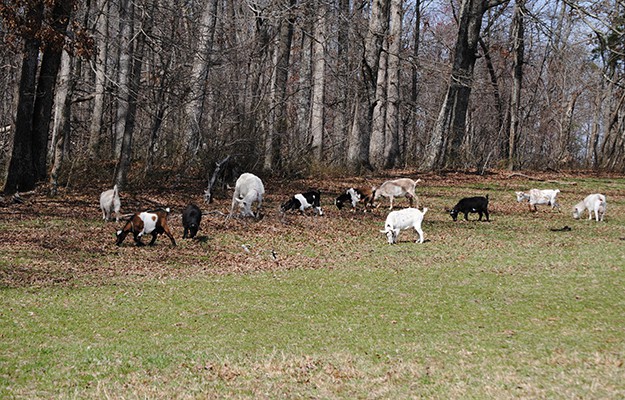
Never skimp on the quality of your buck. Many believe that the dairy capacity of a doe passes down to her buck kids, and thus he passes it to his offspring as he breeds your does. He is the greater majority of your herd, and must be chosen carefully for the traits you wish to see in your herd – in this case, excellent mammary capacity in the dam, and a good size stature in order to produce kids which will give a good amount of meat. Goats tend to kid easily, with minimal assistance from human beings.
Single kids are more usually seen in first pregnancies, with twins and triplets being fairly common afterwards. Quads and quints are less usual, but are seen. In my experience they are mostly seen at 3am when you’re half asleep and you only brought three towels to the barn. You’re not a seasoned goat keeper until you’ve had to strip off your jacket and / or shirt to catch a bonus baby in!

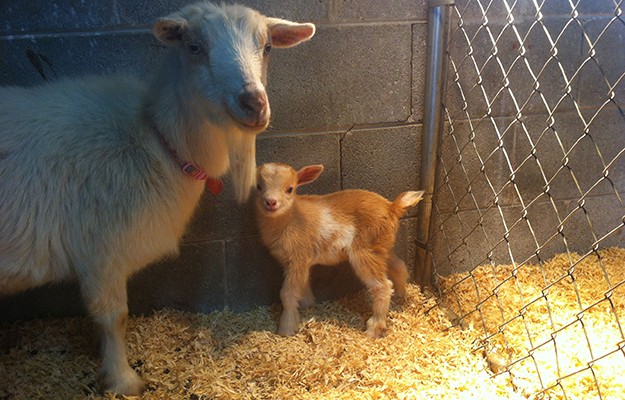
While goats are pretty self-sufficient, there are a handful of medications you should probably have on hand in their very own prep box. A simple teat dip, to keep the milking process sanitary and to prevent ingress of bacteria into the udder, can be made with a mixture of water, rubbing alcohol and tea tree oil. To your box, also consider adding LA200 and PenG (antibiotics), ‘Today’ and ‘Tomorrow’ (mastitis treatments), BoSe (selenium supplement), Maalox (for upset rumens), C&D antitoxin (in case of plant poisoning or enterotoxemia), activated charcoal and Vitamin B complex. There are many other things that you would have in a perfect world, but these are simply the things I would have as a bare minimum.
But for all this to work, for the goats to fit into your prepping plans and to add real value to them, as opposed to creating more work, it is imperative to buy quality stock. Low quality animals may come with existing illnesses that cause them to have problems kidding, produce weak kids, bring sickness onto your property, or even transmit illness to your family through the meat or milk. Responsible breeders usually test for common illnesses such as CAE, CL and Johnes, and keep reliable records of antibiotics given and other medical issues. By reviewing all this before you purchase, you will give yourself the very best chance of having a thriving farmstead to add to your prepping arsenal.
Read more from Katy at Poppy Creek Farm!
Originally posted on June 10, 2014 @ 2:13 PM
Comments
comments
Suggested Videos
This Article Was Found On pioneersettler.com Read the Original ArticleRead More Here: Goats – A Homesteader’s Best Friend
No comments:
Post a Comment